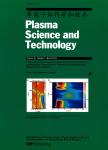Deuterium Retention and Physical Sputtering of Low Activation Ferritic Steel
Deuterium Retention and Physical Sputtering of Low Activation Ferritic Steel作者机构:Department of Nuclear Engineering Hokkaido UniversitySapporo060-8628 JapanDepartment of Nuclear Engineering Hokkaido UniversitySapporo060-8628 JapanDepartment of Nuclear Engineering Hokkaido UniversitySapporo060-8628 JapanDepartment of Nuclear Engineering Hokkaido UniversitySapporo060-8628 JapanJapan Atomic Energy Research Institute NakaIbaraki-ken311-0193 JapanJapan Atomic Energy Research Institute NakaIbaraki-ken311-0193 Japan
出 版 物:《Plasma Science and Technology》 (等离子体科学和技术(英文版))
年 卷 期:2005年第7卷第2期
页 面:2737-2740页
核心收录:
学科分类:08[工学] 0805[工学-材料科学与工程(可授工学、理学学位)] 080502[工学-材料学] 0702[理学-物理学]
主 题:ferritic steel fuel hydrogen retention sputtering yield first wall fusionreactor
摘 要:Low activation materials have to be developed toward fusion demonstrationreactors. Ferritic steel, vanadium alloy and SiC/SiC composite are candidate materials of the firstwall, vacuum vessel and blanket components, respectively. Although changes of mechanical-thermalproperties owing to neutron irradiation have been investigated so far, there is little data for theplasma material interactions, such as fuel hydrogen retention and erosion. In the present study,deuterium retention and physical sputtering of low activation ferritic steel, F82H, wereinvestigated by using deuterium ion irradiation apparatus. After a ferritic steel sample wasirradiated by 1.7 keV D^+ ions, the weight loss was measured to obtain the physical sputteringyield. The sputtering yield was 0.04, comparable to that of stainless steel. In order to obtain theretained amount of deuterium, technique of thermal desorption spectroscopy (TDS) was employed to theirradiated sample. The retained deuterium desorbed at temperature ranging from 450 K to 700 K, inthe forms of DHO, D_2, D_2O and hydrocarbons. Hence, the deuterium retained can be reduced by bakingwith a relatively low temperature. The fluence dependence of retained amount of deuterium wasmeasured by changing the ion fluence. In the ferritic steel without mechanical polish, the retainedamount was large even when the fluence was low. In such a case, a large amount of deuterium wastrapped in the surface oxide layer containing O and C. When the fluence was large, the thickness ofsurface oxide layer was reduced by the ion sputtering, and then the retained amount in the oxidelayer decreased. In the case of a high fluence, the retained amount of deuterium became comparableto that of ferritic steel with mechanical polish or SS 316 L, and one order of magnitude smallerthan that of graphite. When the ferritic steel is used, it is required to remove the surface oxidelayer for reduction of fuel hydrogen retention. Ferritic steel sample was exposed to the envi



